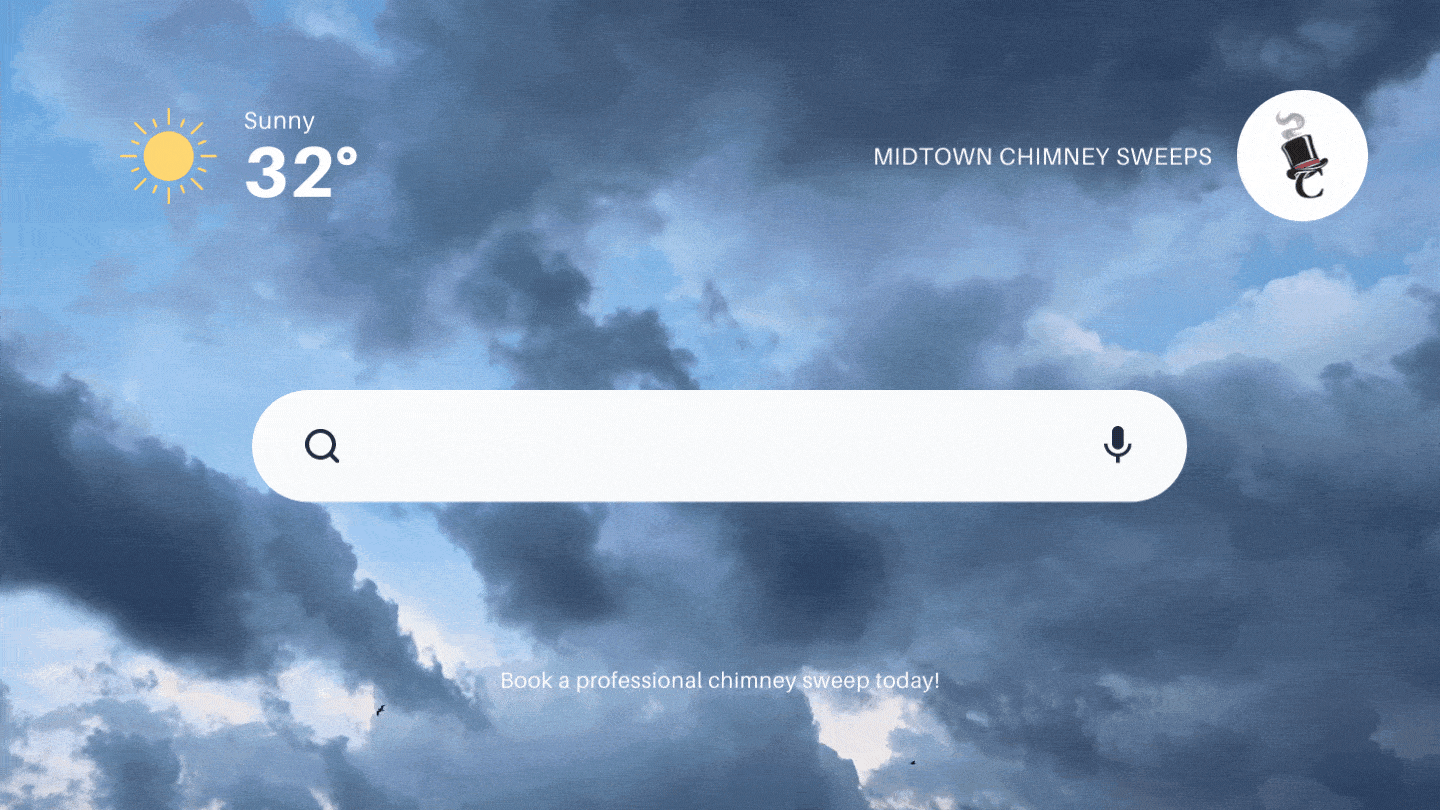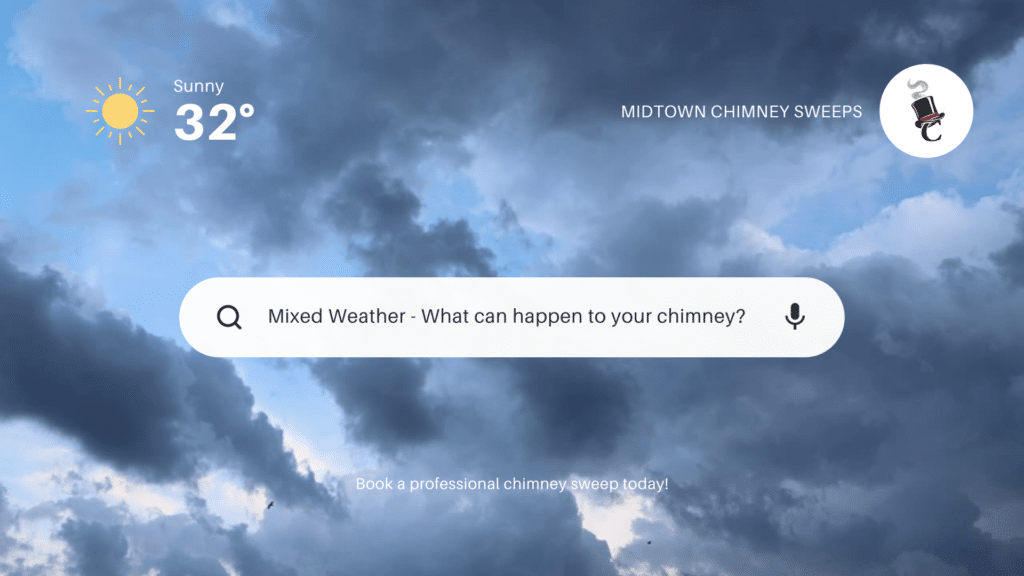
The freeze-thaw phenomenon has shaped our world and has been a part of natural erosion since the dawn of time. As humans, we have adapted to many habitats and designed our homes accordingly. Many states experience frigid winters, lashed with frost, rain, snow, and sub-zero temperatures. And your chimney is vulnerable to the freeze-thaw cycle due to its extended position. It can take quite a beating. But there are steps you can take to avoid the inconvenience and cost of a major repair.
Freeze-thaw cycles affect more than your chimney. The constant freezing and thawing of water within the pipes can cause cracking. Pipes and chimneys need to be inspected regularly to avoid severe damage.
What is the Chimney Freeze-Thaw Cycle?
Masonry chimneys, made of good, old-fashioned brick and mortar, have it rough during the winter. They are highly porous and absorb water from rain and snow. When temperatures drop below freezing, the water turns to ice. When water freezes, it expands, and this can cause structural weakening. When the weather warms up, and the ice melts, the damaged mortar can crumble, crack and disintegrate, leading to costly chimney repairs.
What the freeze-thaw cycle does to your chimney
Water is a solvent and can cause damage even without freezing. It erodes the masonry and can seep into your home structure, causing dampness issues. The freeze-thaw cycle exacerbates these problems. We see the effect of a harsh winter all around our cities. Potholes on the streets and cracks on the sidewalks are also results of the freeze-thaw cycle. Imagine the same thing happening in your chimney. As the structure chips, cracks, and crumbles, it will not only begin to look unsightly, but it will also become a safety hazard. It can block the chimney, leading to poor ventilation and toxic carbon dioxide being pumped into your home. It’s essential to call a chimney technician before this happens and keep your chimney in good shape throughout the year.
Don’t assume that, because your chimney was built with a moisture-proof material, it is invulnerable to harsh conditions. The stone itself may be protected, but the mortar that holds it together can still absorb water, causing problems aside from the actual deterioration of the chimney and dampness on the walls and ceilings. It can also clog the fireplace cleanout area. The fireplace assembly can also rust and deteriorate. To avoid a rusted fireplace install stainless steel. The chimney is an escape valve for heat, and if the heat is trapped in your home, it can be uncomfortable and damage your central heating/cooling system. The chimney can also deteriorate to such an extent that it can collapse and fall off your roof, causing injury or even death.
Repairing your chimney
Prevention is better than cure, so inspecting your chimney each spring is a good idea. Schedule an appointment with a chimney technician, who can give a thorough report back. If any damage is noticed, it must be repaired immediately. Don’t wait for the following winter, as many of these repairs can’t be done during the winter months. Leaving it unrepaired can also lead to more long-term damage and costly repairs.
Signs of Damage- What is the Chimney Technician Looking for?
Always be on the lookout for leaks. These are the first signs of a problem. Most leaks are noticed at the flashing, which is the metal covering around the point where the chimney meets the roof. If moisture gets in there, it can go directly into your home.
The crown is also an area that needs to be monitored carefully. This is the very top of the chimney, and even the tiniest crack can see water entering your home.
If you can’t see any damage, there are other signs of a problem. For example, if you notice water dripping into your fireplace, it is cause for concern, but other symptoms may seem less obvious. For example, stains on your walls and ceiling indicate water is seeping in. You may also recognize an odor emanating from the fireplace as it is breeding mold and mildew. Creosote, which occurs in the soot lining your chimney, will react with heated water and release a foul smell.
You may also notice efflorescence on the chimney bricks. This deposit of salt appears when there is water on brick and other building surfaces. The salt occurs in water and is left behind after the water evaporates.
If a technician finds damage, they will perform a procedure called tuckpointing. It’s simpler than it sounds and refers to the removal of old and damaged mortar that is then replaced to match the existing look, ensuring it remains aesthetically pleasing. It requires special tools and expertise. You will need a professional to do this.
What Can Be Done to Avoid Future Chimney Repairs?
Being proactive is vital because most repairs cannot be done in winter. Preventative measures will ensure your chimney is prepared for the upcoming winter. Regular maintenance will also work out more affordable than emergency repairs. If the chimney shows any signs of being a safety hazard, such as falling off the roof, it must be dealt with immediately.
There are steps that you can take to avoid damage and future repairs. Your chimney can also be protected from the freeze-thaw cycle. The first step is to ensure that the chimney cap is secure and installed in a manner that prevents water from getting in and running down the flue. This causes damage to both your fireplace and the inside of your chimney. The flashing should also be carefully checked to ensure no water can pass.
The location of the chimney of your roof can play a role as some areas can experience more snow and rainwater than others. If it is in an area that receives a lot of precipitation, you should also have a cricket installed. This is a pitched sheet of metal that will carry water away from the chimney.
The purpose of the chimney crown is to protect the outer walls of your chimney by diverting the water. Always ensure that it is in good condition and functions properly. Your best defense from damage during the freeze-thaw cycle is superior quality waterproofing. A specialized solution is applied to the chimney, sealing it from moisture.
When properly applied, this solution will ensure that the masonry can ‘breathe’ so that toxic exhaust gasses don’t become trapped, but will still ensure total protection.
Nothing can freeze or thaw if no water can get in, causing damage. Keep your chimney in good shape, inspect regularly, and call a professional the minute you sense there is an issue. The quicker it is dealt with, the fewer issues you will have overall, saving time and money.
